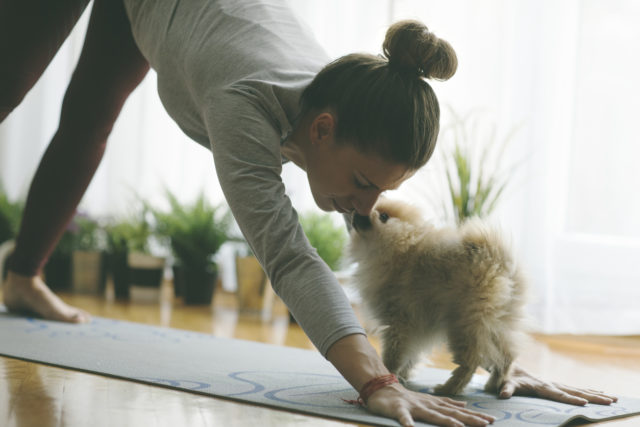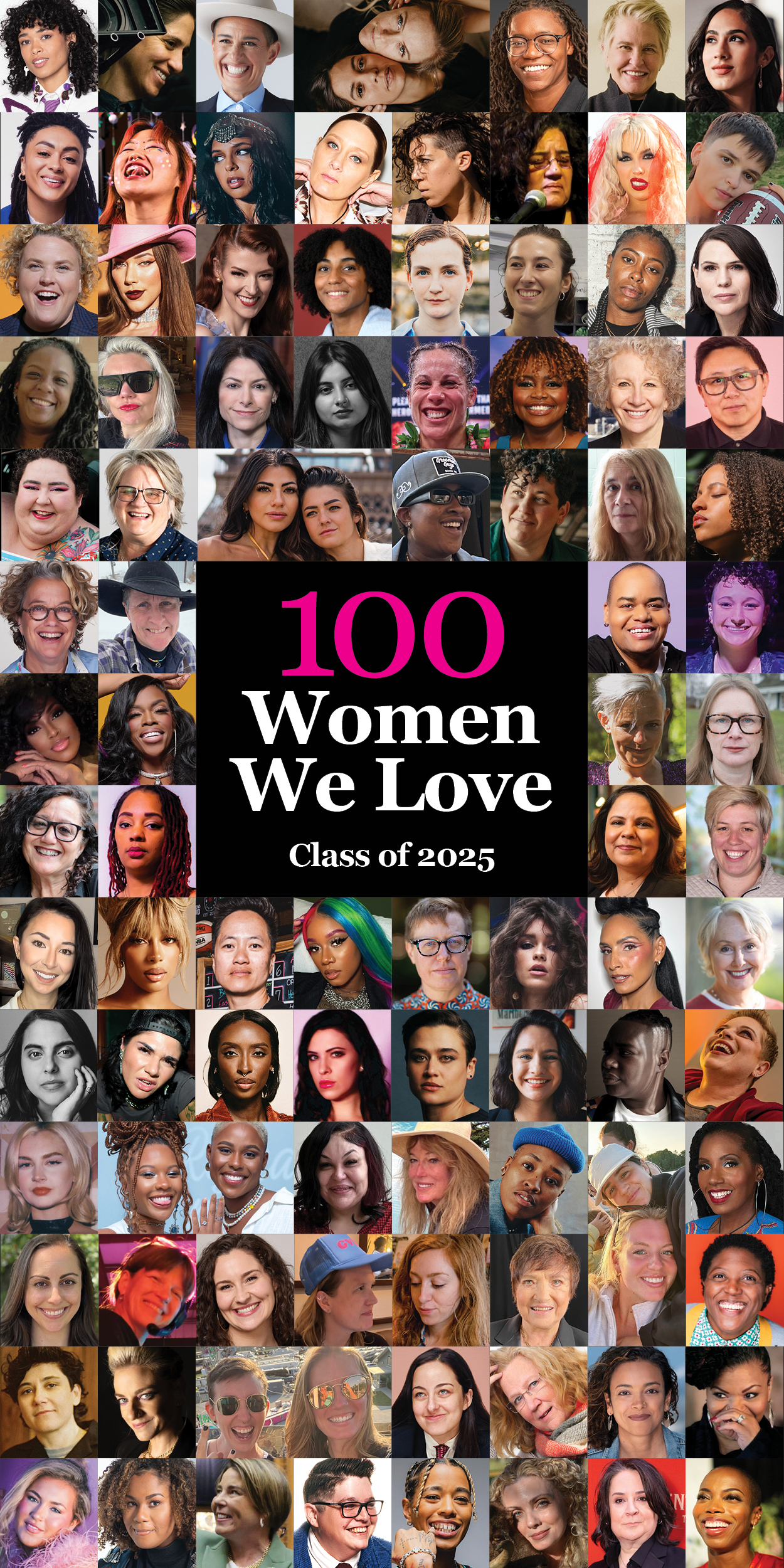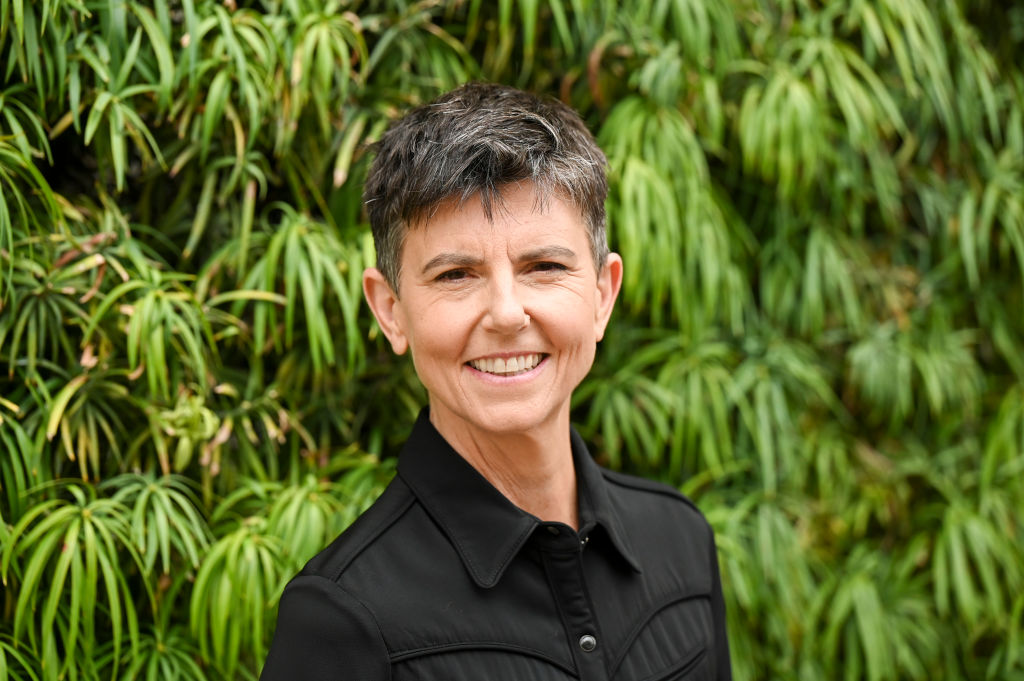Lesbian Body Positivity: A Yoga Expert Shares Her Tips For Staying Healthy

“To me, body positivity means treating my body like it’s my best friend.”

My girlfriend Heather and I were out having dinner when she asked me to join her in signing up for a 10K run to raise money for cancer research. The event was months away at that point, and I’d had a few drinks, so I wasn’t thinking clearly. I reluctantly agreed, as my girlfriend looked longingly into my eyes. (How could I say no… I mean, really?)
Honestly, I thought the run wouldn’t happen. In fact, I forgot all about it, until Heather showed up at my apartment a couple days later holding a new pair of running shoes: her “gift” to me to help me prepare for the run. As someone who considered walking from my apartment to the subway my workout for the day, preparing for this run was going to take me way out of my comfort zone. My girlfriend came up with a plan: do the Couch 2 5K program to get in shape for the run that was still months away.
“Can’t I just raise the money and watch you run?” I pleaded.
“No. No way,” she responded emphatically.
And with that, I found myself getting up every morning to go for a walk/jog/run, which was something completely out of character.
In the beginning, I thought I would die, as I desperately gulped for air while my former track-star girlfriend ran laps around me. But eventually, I realized that I wasn’t going to die. Shockingly, I began to actually enjoy running. No, wait. I didn’t enjoy the running. I enjoyed the way the endorphins felt after the daily run was over. By the time the 10K race day arrived, I was at a point where I liked the way my body felt. I was fitter, had more energy. And not only did I survive the 10K run, but I also made a promise to myself that I would take better care of my body and make fitness a priority. While I’ve stopped working out a handful of times in the past few years, I always get back on the fitness wagon, eventually. For me, it’s less about the way I look and more about the way I feel. Because physical fitness is not only good for our bodies, but also for mental health.
We all know that exercise is good for us. Both The National Coalition for LGBTQ Health and the National Gay and Lesbian Task Force are proponents of encouraging healthy eating habits and exercise programs for LGBTQ people. Regular exercise has been shown to improve mental health, reduce stress, anxiety, and depression. It even improves self-esteem. This is especially important for those of us who identify as LGBTQ because our population experiences higher rates of depression and anxiety than straight, cisgender people. Regular exercise improves the quality of life in older LGBTQ people too, by strengthening bones, heart, and lungs, lowering blood pressure, increasing energy, improving balance, improving sleep and mood, and reducing the risk of diabetes.
Kimber Simpkins is a Registered Yoga Teacher (500-E) and Certified Anusara Yoga teacher who has taught yoga in the Bay Area for more than 15 years. Kimber is also a mindfulness teacher who has authored two books about body positivity.
When I asked Kimber what she would recommend to someone who hasn’t been physically active in the past but is interested in getting fit, she said, “When do you remember feeling really alive and at home in your body? Let that feeling be your guide for movement you might enjoy now. Look for movement you love, and you’ll never feel like you have to exercise.”
Whether you’re a fitness newbie or a veteran exerciser, it’s important for us to be gentle and patient with ourselves while taking body-positive approaches to fitness. Body positivity, as defined by Wikipedia, “is acceptance and appreciation of all human body types. It is a social movement rooted in the belief that all human beings should have a positive body image, and be accepting of their own bodies as well as the bodies of others.” Body-positive fitness is about pleasure, not punishment.
“To me, body positivity means treating my body like it’s my best friend,” Kimber added. “I don’t allow my inner critic to speak badly of myself, and instead I notice and take care of myself when I’m feeling tired or down. I listen to my body’s signals of hunger and fullness in order to neither overeat or undereat. Body positivity also means creating a community of people who are positive and thoughtful about how they relate to their bodies too.”
As someone who has been shy and anxious in the past about attending fitness classes—particularly those filled with straight women—I was curious if Kimber had any advice for the lesbian community, specifically about fitness and body positivity.
“One thing for us to know as lesbians is that sometimes we feel discomfort in our bodies because society isn’t comfortable with our bodies,” Kimber noted. “It’s important that we work to undo that negative internalization because otherwise, we can unconsciously believe that our discomfort is our own fault and that we have to change our bodies to fix it. Just as we work hard to let go of society’s expectations about who we should love, we have to let go of society’s expectations around what we should look like.”
Ultimately, it is up to you how much of a commitment you make to fitness and physical well-being. You should do it for yourself and no one else. You can have a regular exercise regime without intensely focusing on the appearance of your body (or that of others around you in the gym). I was once completely resistant to fitness and exercise, but I’ve learned to love it. Not because I need my body to look a certain way and not because I am trying to fit an acceptable standard of how women “should” look, but because long after the cursing at the fitness trainer ends and after the sweat has been wiped away, exercise elevates my mood, keeps me motivated, and—most importantly—keeps me healthy.












